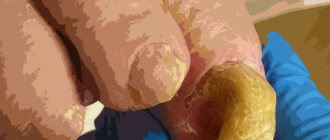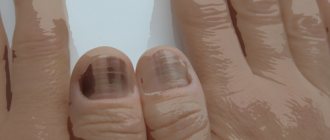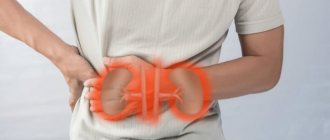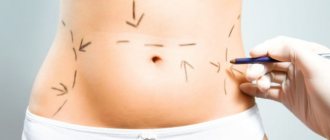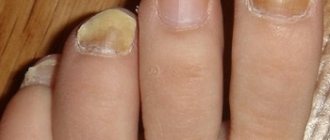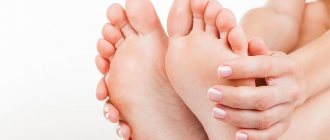For several years in a row, the trend has been to look natural: wear nude makeup and not paint your nails at all. But for this, the nail plate must look perfect. If your nails look unkempt and untidy, that’s not so bad. A good manicure will fix the situation. But if they are unhealthy, urgent measures need to be taken.
The nail plate is keratinized tissue, plates of keratin. The density of the nail plate depends on keratin, and the elasticity of the nail depends on the saturation of the cells with moisture. Nails also contain microelements (zinc, chromium, calcium, iron, etc.).
Based on the condition of the marigolds, conclusions can be drawn about a person’s health. When making a diagnosis, practitioners of oriental medicine focus on the condition of the skin, nails, tongue and whites of the eyes in order to understand what pathological processes occur in the body.
A healthy nail has a uniform flesh color, the nail hole is smooth, whitish, there are no spots or seals on the nail plate and under it, the nails themselves are dense, smooth, without grooves or cracks, do not delaminate, have a normal thickness: not too thin and not too dense .
Why nails peel: causes and types of nail diseases
An unhealthy condition of nails can result in an unusual color, excessive hardness, and delamination. Various diseases cause specific changes in the structure of the nail. They arise due to external, internal and psychological factors.
External causes of unhealthy nails
- Chemical exposure (household chemicals, hard water, plant juices, soil - when working in the garden - and so on).
- Using varnishes with formaldehyde and aggressive agents with acetone to remove nail polish.
- Improper removal of nail extensions.
- Constant hypothermia of the body or being in conditions of low air humidity.
- Damage caused by bruises, injuries, regular exposure to tools or devices. For example, the marigolds of people who work in the soil, shoemakers, and musicians are often in poor condition.
Internal causes of nail disease
- Disturbances in the functioning of internal organs.
- Metabolic disorders due to diseases or a poor diet that lacks trace elements and vitamins. In general, it is very important to monitor your diet. After all, it’s easier to prevent the problem than to later look for ways to deal with peeling nails.
- Skin diseases that also affect the condition of the nails (psoriasis, lichen, fungal infection, epidermolysis, x-ray dermatitis, etc.).
- Hormonal imbalance in adolescence, during pregnancy, lactation, menopause, in stressful situations, due to certain diseases.
- Poisoning with drugs or heavy metals. This also includes regular exposure to toxic substances (tobacco, alcohol, narcotic poisons) on the body.
Psychological reasons
All psychological causes are a consequence of stressful effects on the human nervous system. Certain pathologies develop. Stress itself leads to a malfunction of internal organs, which certainly affects the condition of the nails.
Onychotillomania
- a pathology in which a person tends to break, tear off, or somehow destroy his own nails.
Onychophagia
- a person bites his nails without controlling this process.
What diseases will a manicure tell you about?
If you notice that your fingernails are peeling and breaking, then you should think about the possible presence of any diseases. After all, the state of our fingers reflects what is happening inside. In the absence of visible causes from other categories, this symptom cannot be ignored.
What diseases cause peeling fingernails? Typical diseases include:
- Cardiovascular diseases. As a result of heart defects, peripheral blood supply is significantly deteriorated. The fingers do not receive enough oxygen and nutrition.
- Helminths. When infected, metabolic processes are disrupted and the absorption of vitamins and minerals important for the functioning of the intestinal walls is impaired. The symptoms are similar to vitamin deficiency, so it is easy to confuse them with self-treatment. The doctor will take into account other signs characteristic of this disease.
- Anemia. Lack of iron in the body leads to a decrease in hemoglobin. As a result, the capillaries suffer and there is a lack of oxygen necessary for normal functioning.
- Deviations in the functioning of the endocrine system. The most noticeable are imbalances in the thyroid gland and diabetes mellitus. Women over 45 years of age should be especially attentive to themselves, because it is during menopause that the risks of developing these diseases increase.
- Serious inflammatory and viral diseases. In the presence of tuberculosis, rheumatism, frequent bronchitis, kidney dysfunction, and the Coxsackie virus, the body's defenses are significantly reduced. This is evidenced by exfoliating, brittle nails.
Why do my toenails peel?
Legs are less susceptible to negative factors associated with exposure to chemicals than arms. But constantly wearing shoes increases the likelihood of micro- and macrotrauma to the nail plate.
But the most common causes of peeling include fungal diseases. Infection can occur due to violation of hygiene standards, wearing someone else's shoes, etc. This group of diseases is called onychomycosis. When affected, the nails become peeling, turn yellow or change color to dirty gray.
Why nails peel: types of nail diseases and causes of peeling
In this section we provide a list of the main nail diseases and general principles of their treatment.
Let us warn you right away: we categorically do not recommend diagnosing yourself with a particular disease and starting to treat it, following general recommendations. Consult a doctor - a dermatologist or mycologist. Sometimes you need to visit a gastroenterologist or endocrinologist, it all depends on the cause of the deterioration in the appearance of the marigolds.
Firstly, without specific knowledge, you will not give yourself the correct diagnosis. Secondly, incorrect treatment and uncontrolled use of drugs can lead to much more depressing consequences than nail diseases.
We have outlined the descriptions of diseases and treatment methods for only one purpose. If you have a rough idea of their symptoms, it will be easier for you to understand that it’s time to see a doctor and find out how to get rid of the dissection. You can’t leave things to chance and think that brittleness and splitting of nails will go away on their own.
Onychodystrophy - unhealthy nail syndrome
The term means that nails become brittle, dull, and dry. The tips split into separate scales. When nails peel, they grow slowly.
Onychodystrophy is not a specific disease, but a characteristic of the ill health of the nail plate. This is a pronounced pathological condition that indicates complex disorders in the functioning of organs and systems of the body. Below we have provided a list of diseases that fall under the general definition of onychodystrophy. Each disease has its own symptoms.
Onychoschisis
- the nail plate splits symmetrically and only in the area of the free edge of the nail. The nail itself may be intact and dense, but its free edge becomes thinner. Sometimes the color of the nail plates changes to off-white or grayish. All of the above factors can cause the disease.
Long-term intake of vitamins A and B12, oral administration of a 10% gelatin solution, as well as medications prescribed by a doctor help restore the nail plate. It may be necessary to carry out certain procedures, which should also be prescribed by a doctor.
Onycholysis
- the nail plate exfoliates along the growth. A plate extends from the free edge, which subsequently completely disappears from the surface of the nail; the nail itself has a grayish tint. The nails are peeling on both the hands and feet. The layering of nail plates looks untidy, nails cling to clothes, and dirt and infection get into the cracks between the plates.
Why do nails peel this way? The cause of the disease can be skin infections, endocrine disorders, the influence of alkalis and acids, injuries, and syphilis.
Treatment is usually carried out locally. Using scissors, the exfoliated layer is separated, and a bandage with syntomycin ointment is applied to this place. It is recommended to lubricate your nails with Castellani liquid. Increased intake of vitamin A and gelatin is indicated.
Onychorrhexis
- deep longitudinal grooves appear on the nails, which run from the free edge to the base. Subsequently, some of them crack and cause pain. The stripes have different shades of color: from light to dark brown.
The cause may be a lack of nutrients, serious disturbances in the gastrointestinal tract, eczema, lichen and psoriasis. The disease affects several nails of the hands and feet, sometimes all at once.
For this disease, the use of vitamin A for 1 month is indicated.
Onychomadesis
- separation of the nail from its base to the end. Happens after injury.
Koilonychia
- a depression appears in the center of the nail, but the color and thickness of the plate remain the same.
Scleronychia
- nails thicken, grow worse, become yellow-brown, and move away from the nail bed.
Gapalonychia
- softening of the nail plate. The free edge of the nail breaks off easily, and delamination begins.
Onychogryphosis
- the thickness of the nail changes, lumpiness, unevenness, and roughness appear.
Trachyonychia
- the nail plate becomes loose, dull and rough. Sometimes the nails become very flaky.
Sometimes a clear diagnosis cannot be made for onychodystrophy, but pronounced brittleness of the nails and their separation indicate that there is a problem in the body.
Increased fragility of nails is a signal that it is time to start treatment. The plate breaks off from external influences, the edge of the nail resembles a fringe. Simple cutting does not help: after some time, the free edge of the plate begins to break off again. The lesion affects all the nails of the hands at once.
The reason may be an illiterate manicure procedure, endocrine disorders, exposure to high and low temperatures and chemicals.
Characteristics of the condition and diagnosis
Determining brittle nails is quite easy. Patients often complain about the plate breaking off at the free edge with defects in all layers (sometimes only the top). With onychoschisis, abnormal growth of the nail is observed - it grows normally until the free edge, and then splits into several thin plates lying on top of each other, which ultimately break off1. Diagnosis and treatment of brittle nails in most cases is carried out by a dermatologist. It may be useful to consult a mycologist, therapist, hematologist or endocrinologist. Laboratory tests for onychodystrophies (in this case, brittle nails) most often include:
What to do if your nails peel and break: treatment and manicure
General recommendations are for everyone, regardless of what caused the splitting and brittleness of your nails.
If the reason is a violation of nail treatment technology, we recommend that you carefully read the following articles:
- How to do a European manicure.
- How to do a trim manicure and care for the cuticle.
- How to do a hardware manicure. Description of the procedure.
- How to choose wire cutters.
- How to choose a file.
We recommend choosing a crystal or laser file. Laser and crystal files are the most delicate tools that can be used to “solder” peeled nail flakes. You need to file the nail in the direction from the edges to the center and from the tip to the base. Sand only dry, unpainted nails.
Check the quality of polishing using nylon tights. Run your nail along them: it should glide smoothly and not catch on the threads.
Sand any imperfections as soon as you find them. File the tip of the nail as soon as it breaks. Before treatment, wipe the nail with an antiseptic. If your nail is damaged by an infection (fungus, eczema), sterilize the file in a special solution after each use. Please note that in such cases, sandpaper files are not sterilized, but thrown away. To save money, it is wiser to purchase glass or crystal, which can be disinfected and washed.
Do not polish your nails for more than 2 minutes: there is a risk of thinning the nail plate.
What to do in case of onychodystrophy?
Symptoms can be ambiguous, so if you detect the slightest deviation, contact a podologist or dermatologist. It is impossible to independently make a correct diagnosis, identify the type and causes of onychodystrophy based on reviews on forums on the Internet. Knowledge of medicine and understanding of the mechanisms of pathological changes are needed. Sometimes several variants of onychodystrophy are present at the same time, which makes diagnosis difficult.
First, the doctor will examine your nails. Assess the color, transparency, condition of the cuticle, shape of the plate, tightness of fit to the nail bed. Then he will ask about accompanying symptoms, lifestyle, work, nail care, and general diseases.
For onychodystrophy the following is prescribed:
- blood analysis;
- dermatoscopy (examination with magnification);
- scraping the affected area to examine for fungus.
In the presence of any type of onychodystrophy of the hands and feet, the affected areas are analyzed for fungus, since it causes 50% of all nail diseases. In case of doubtful results, the test is repeated 2–3 times at intervals to accurately verify the absence or presence of the pathogen. The treatment tactics depend on this analysis. When a fungal infection is confirmed, the emphasis is on fighting the pathogen; after its destruction, the nail plate itself will recover.
If the diagnosis of onychomycosis is made incorrectly, then medications against the fungus will not work, and the condition of the nail will not improve. In addition, unjustified therapy with fungicidal agents is harmful to health.
How to nourish and restore nails: moisturizing the nail plate
To keep your nails healthy and not break or peel, it is important to maintain the water-salt balance in the body: drink the required amount of clean water daily. Usually it is 2 liters, but it can be 1.5 or 3.
- Take baths with nutrient solutions. Salt baths strengthen the nail plate. You can add a few drops of olive or castor oil, as well as lemon oil. It is enough to do such a bath once a week, keep your nails in it for several minutes, and you will already see the result of the procedure.
- Do not use nail polishes and gels, cleansers with formaldehyde and toluene.
- Buy cuticle oil and apply it daily. The product will not only restore the cuticle, but also saturate the nail plate with nutrients and make it more flexible, dense and elastic.
- After a manicure, be sure to use cuticle oil and apply cream to your hands. Choose several suitable products for yourself. You should always know how to strengthen your nails. Products based on shea butter, lemon oil or sea buckthorn are well suited for these purposes. Such creams and the oils themselves nourish both nails and hands well. A manicure for peeling nails involves only surface treatment and nourishing creams and oils: no varnish!
- To prevent delamination, include in your diet vitamin complexes for nails containing vitamins A, E, B, calcium, magnesium, phosphorus, iodine, selenium. It is recommended to take vitamins as prescribed by your doctor.
- Make nourishing or paraffin masks regularly. Hands are dipped into liquid paraffin for 5 minutes, which creates a sauna effect after hardening. Hands become smooth, and nails become noticeably stronger and glossier. This can also be done as part of home hand care procedures, without visiting a salon.
- Include fermented milk products and liver in your diet, as well as foods with antioxidants. For example, grape seed oil. When there are not enough vitamins and minerals, white spots appear on the fingernails.
- Minimize your use of alcohol and tobacco. For peeling nails, these are the first enemies.
- Play sports: the general tone of the body will inevitably affect the health of the nails. 30 minutes a day three times a week is enough.
What else should you avoid if possible? From the regular use of medications, which, as the saying goes, cure one thing and cripple another. Very often, for example, due to hormonal drugs, nails, skin and hair deteriorate.
Traditional methods
Home remedies are based on the effects of medicinal herbs. Traditional medicine experts suggest making medicinal baths from their decoctions.
Therapeutic baths
For nail plate delamination, the following are suitable:
- chamomile;
- mint;
- motherwort;
- nettle;
- eucalyptus.
They can be used separately, or you can take one teaspoon of all of the above herbs, pour in 200 g of boiling water, leave to brew, after half an hour add a tablespoon of salt (preferably ocean salt), mix well.
Keep your hands in the resulting solution for half an hour. Baths should be done daily, the course duration is two weeks. The product perfectly softens and moisturizes the skin, stimulates nail growth, and strengthens the plates.
How long can you wear gel polish?
Technologists advise walking with the coating for no more than 2-3 weeks. But often girls wear gel polish for a month, or even longer. However, they do not understand that they can damage the nail plate. Prolonged wear puts stress on the tip of the nail plate, its root suffers from the weight of the coating. And this can lead not only to breakage, but also to deformation of the nail plate.
